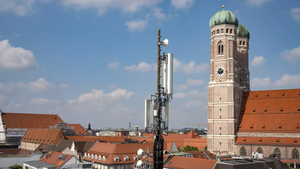
BERLIN -- Broadband World Forum 2018 -- Detailed recommendations for a "converged" 5G core network addressing both fixed and mobile network needs will this week be delivered to the 3GPP following nearly two years of development work by the Broadband Forum and some of the world's biggest operators and vendors.
The recommendations are expected to feed into the 3GPP's work on Release 16, a forthcoming standards update, and should eventually make it easier for telcos to launch services that take advantage of both fixed and mobile network capabilities.
The guidelines cover a topic that appears to have been overlooked by the 3GPP -- essentially, how the 5G core can be tweaked to support an operator's fixed-line network.
That appears to have been a major worry for service providers that own both fixed and mobile networks and want to combine these to support new types of 5G service in future. Around ten of the world's biggest operators, including AT&T Inc. (NYSE: T), Deutsche Telekom AG (NYSE: DT), Telstra Corp. Ltd. (ASX: TLS; NZK: TLS) and Vodafone Group plc (NYSE: VOD), first took their concerns to the Broadband Forum standards body in 2016.
The overarching goal is to ensure that a common core network becomes a part of the 3GPP's 5G standard in the 2020 timeframe.
"The key thing right now is that we are at an inflection point of having subsumed all the carrier requirements and vendor sensibilities and are hashing out a plan," said David Allen, a distinguished engineer at Ericsson AB (Nasdaq: ERIC) and member of the Broadband Forum. "We've been bashing away with this for two years, so it's pretty exciting."
The scope of the project has covered the interfaces that run between the 5G core and the fixed network. Besides creating new service opportunities, this should bolster efficiency by allowing operators to run fixed and mobile services over a common infrastructure.
The same transport and cloud systems could be used to support fixed and mobile technologies, for instance. There would also be common processes for any access technology, including the procedures for credentials, policies and accounting.
"We've made recommendations about signaling changes and enhancements to fully integrate the wireline access into the core," said Allen. "This will drive subscriber management and converged infrastructure and operations."
Allen said the Broadband Forum would also be liaising with other "interested bodies" regarding its wireline specifications, including the NGMN, a mobile industry association that counts most big vendors and operators as members.
Both Telstra and Vodafone are hopeful that a converged core will let them take full advantage of network slicing, a means of providing different network services over the same physical infrastructure. Some of these slices might combine fixed and mobile capabilities, said executives from those companies.
Want to know more about 5G? Check out our dedicated 5G content channel here on
Light Reading.
Tom Anshutz, a distinguished member of the technical staff at AT&T, is also a champion of the Broadband Forum initiative. "I am looking for a common capital investment on infrastructure that can serve both wireless and wireline customers," he said at today's Broadband World Forum in Berlin. "With 5G there is a need for densification to put fiber deeper into the network and the business case looks good when fiber serves the PON [passive optical network] and some small cells and metro WiFi services for wireless."
Today's update comes nearly a year after Deutsche Telekom had flagged the lack of standardization in the area of fixed-mobile convergence [FMC] as one of the main barriers to the densification of network infrastructure.
"The Broadband Forum is on the way, but the 3GPP is a bit behind in that respect because it is so focused on radio," said Antje Williams, the German operator's 5G executive program manager. "We believe we need this [FMC] to deliver high data rates -- that we cannot do that only with mobile and that we need a combination." (See DT Is Not Going Radio Gaga About 5G.)
— Iain Morris, International Editor, Light Reading
About the Author(s)
You May Also Like


.jpg?width=300&auto=webp&quality=80&disable=upscale)









